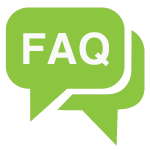We have outlined some common USDA Purchase FAQ’s below. Please contact us below with any questions you might have.
Question: I’m looking to start the home buying process in the spring. When should I start the pre-approval process for the loan? J. Myers – Atlanta, GA. Answer: We recommend a few months before you plan to purchase. Your pre-approval letter will be valid for 90 days. Once expired, a new credit report will be requested, and assuming everything stays the same a new pre-approval letter will be issued. If you think you may have some credit issues, it’s a good idea to start working on them ASAP before your loan application and credit report are obtained by the lender.
Question: My income is below the USDA income 502 guaranteed limits. However, my mother is living me and she receives social security income each month. She won’t be on the loan application, just me. Will her income be included in the overall household eligibility limit? L. McDonald – Jackson, Mississippi. Answer: Good question – the answer is Yes. Let’s assume you make $5,000 per month in gross income and your mother receives $1,200 per month in social security income. The total household income for USDA eligibility purposes would be $6,200 per month. However, some deductions could apply if your mother is 62 years or older. Even though your mother is not listed on the loan application, her income must be included in the total calculations because she lives in the home with you. Note, that this only applies to eligibility, not qualifying. Since you are the only one listed on the USDA loan application, only your $5,000 per month income would be used for USDA mortgage qualifying purposes. Please read more about the 2024 USDA Rural Housing income limits.
Question: My income is below the USDA income limit now, but what happens if it increases over the limit in the future? H. McCoy – Fredericksburg, VA. Answer: Your household income calculation up to the time of closing is the only time your income is reviewed. The probability of future income is not considered.
Question: I’m renting a home outside of Madison and the owner decided he wants to sell. I like the home and would like to purchase it from him, can I do this with the USDA loan? A. James – Naples, FL. Answer: Yes, as long as the home resides in a USDA-eligible location it doesn’t matter who is selling the home, or if you currently rent it.
Question: Can I have a co-signer help me get qualified for a 100% USDA loan? C. Ramos – Savannah, GA. Answer: The program does not permit non-occupying co-signers. Anyone listed on the loan application must occupy the home full-time.
Question: How long does it take to close a USDA Rural home loan? R.Earnest – Bakersfield, California. Answer: It really depends on the state. Unlike other loan programs, USDA RD loans have a two-step underwriting and approval process. First, the mortgage company must process the loan file, order appraisal, inspections, and clear loan conditions. Once they are complete, the loan file is sent to the local USDA office for the final commitment. Think of this as a “final check” to ensure the lenders accurately process the loan file. It generally takes lenders about 15-20 days to complete their end of the process. However, the USDA commitment (final check) can vary from state to state – this can take a few days to 1 month. Some busy states like California, Georgia, Florida, and Texas can experience USDA closing times ( from start to close) of about 40 days. More rural states like Wyoming, Montana, Utah, and Idaho can close in as little as 25 days.
Question: I found a home to purchase and want to start my USDA loan application. How would I complete all the paperwork and closing from a long distance? K. Smith – Little Rock, Arkansas. Answer: The loan application only takes 20-30 min and is often completed over the phone with your loan specialist, online, or by mail – whatever you prefer. Once you are pre-approved and under contract to purchase a home – the loan disclosures are either mailed to you or securely e-mailed to you electronically for added convenience. You can sign all the loan documents electronically from your computer or smartphone, or just mail them back if you prefer. When it comes time for your big closing day, the actual closing and final settlement will be local at a title agent or attorney’s office in your town.
Question: I’m going to purchase a home real soon in a USDA-approved area just outside of the city. I have about 5% to put down on the loan, can I do this? J. Hernandez – Macon, GA. Answer: For sure, the program allows up to 100% financing, but that is not required. Home buyers can put money down on their home if they prefer to lower their loan amount/payment. However, homeowners that have significant cash savings needed for a conventional type loan (20% down) would use conventional financing.
Question: I have a 695 credit score, however, I had a home foreclosure a few years ago. Would I still be able to qualify for a USDA loan? L. Matthews – Sarasota, FL. Answer: Even though your credit score exceeds the minimum 620 credit score mandated by most USDA lenders, the home foreclosure would require you to wait a few more years. This is a great question, and applicants should be aware that a 620+ credit score does not guarantee loan approval. All mortgage companies have additional requirements for home buyers who have experienced serious financial setbacks like a foreclosure, short sale, or bankruptcy. They call this called “overlays” and the required wait period for home default situations is normally four years from the discharge date (not the start date) regardless of current credit score.
 Question: What are the closing costs with a USDA mortgage, what can I expect to pay? I. Hall – Columbia, South Carolina. Answer: USDA Closing costs can vary greatly from state to state. In addition, the taxes, home insurance, and interest rate lock terms and influence the closing costs significantly. The general rule of thumb is to allocate about 3-5% of the home purchase price for closing costs and required prepaid tax/insurance costs. Like most mortgages today, USDA requires that taxes and home insurance be “escrowed” and included in the monthly payment.
Question: What are the closing costs with a USDA mortgage, what can I expect to pay? I. Hall – Columbia, South Carolina. Answer: USDA Closing costs can vary greatly from state to state. In addition, the taxes, home insurance, and interest rate lock terms and influence the closing costs significantly. The general rule of thumb is to allocate about 3-5% of the home purchase price for closing costs and required prepaid tax/insurance costs. Like most mortgages today, USDA requires that taxes and home insurance be “escrowed” and included in the monthly payment.
USDA does allow home buyers flexible options for closing costs expenses. 1. Buyers can roll their closing costs into their loan with a higher appraised value. Example: the home purchase price is $220,000 – the closing costs and pre-paid escrows are $6,000. As long as the home appraisal comes in at $226,000 – the buyer can add (finance) ALL closing costs into their loan. 2. The home buyer can also request the home seller pay their closing costs as part of the contract. USDA will permit home sellers to pay up to 6% of the buyer’s closing costs. This is the option that is most commonly used.
Regardless of the option used, it’s a good idea for home buyers to have some money allocated for upfront appraisal and home inspection expenses. Depending on the location – USDA appraisals generally cost around $700, and home inspections cost about $550. Buyers can receive this money back at closing assuming 1 of the 2 options listed above. However, they will have to initially pay these expenses in advance during the loan process.
Question: Do I need to pay the 1% USDA guaranteed fee at closing? E. Summers – Pensacola, FL. Answer: You can, however the Guaranteed fee is most commonly added to the borrower’s base loan amount. USDA will permit this regardless of the appraised value. For example – A home buyer purchases a home for $140,000 – 100% financing. The guaranteed fee would be $1,400. The total adjusted loan amount would come to $141,400
Question: Can I purchase a short-sale home with the USDA loan program? Ralph, G – Knoxville, Tenn. Answer: Yes, you can purchase any single-family home that is in decent livable condition REGARDLESS of who is selling the home. The home can be a regular buy owner, short sale, bank REO or foreclosure. The important thing is the location, the home has to be located in an eligible approved area.
Question: I found a muti-unit 4 plex property I would like to purchase a rent out. It already has tenants and long-term lease agreements in place. How much down payment would be required for this? J. Fillmore- Atlanta, GA. Answer: USDA does not permit rental, or income-producing properties. Real estate investors can learn about DSCR Purchase Loans here.
Question: Can I sell my home if I have a USDA loan? J. Kearns – San Antonio TX. Answer: Yes, the agency does not have any requirements on how long you must live in your home, or when you can sell your home. You can do so at any time without penalty.
Question: What about homes that have pools, are swimming pools allowed with the USDA Rural Housing program? C. Vargas – Valdosta, GA. Answer: Yes, USDA does not have any restrictions on in-ground swimming pools. In the past pools could have posed an issue because USDA would not give any value to the pool during the appraisal inspection. Sometimes this caused appraisal issues for buyers purchasing properties with pools. This is no longer the case, swimming pools are now included in the overall appraised value, just like FHA and conventional loans.
Question: I found a home I really like but the address is just outside of the USDA eligibility lines in my area. Is there any exception to this rule? J. Howard – Little Rock, AR. Answer: No, the map eligibility borders are not flexible.
Question: I saw in some places that the USDA Guarantee Fee was 2.75%, you have 1% listed? L. Weller – El Paso, Texas. Answer: Yes, the USDA Guarantee Fee was reduced from 2.75% to 1% on October 1, 2016. The current fee schedule of 1.0% of the loan amount will remain the same until October 2024.
Question: My husband and I are looking to purchase a home just north of Jackson, can you help us with the loan? L. Zimmerman – Birmingham, Ala. Answer: Yes, we assist home buyers in all 50 states!
Do you have a specific USDA question? Please submit the Quick Contact form on this page.
